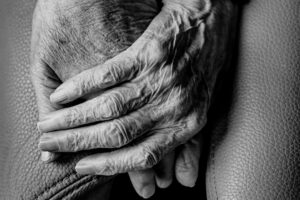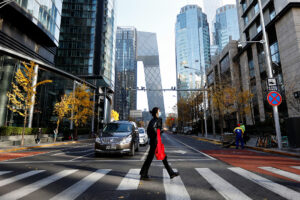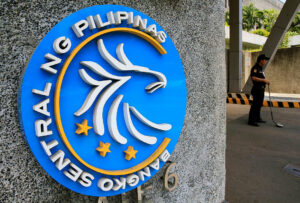The Senior Citizen

Early this month of October, the world observed the International Day of the Older Person. And a few days later, the world celebrated the International Day of the Girl. Other commemorations are held for other sectors throughout the year for various reasons, one of which is to focus on the role of each sector in helping improve the condition of mankind. Another reason is to draw attention to the fact that in many societies, these same sectors are regarded as vulnerable members of society.
We focus on the sector to which we belong, the older person, the elderly, the senior citizen, men and women of more than 60 years.
The Help Age Global Network (the Network) provides some statistics which will be useful in analyzing and discussing the situation of the Filipino older person.
The Network is a diverse group of more than 150 organizations in over 85 countries which supports millions of older people to live safe, dignified, and healthy lives.
According to the Network’s information material, the Help Age International “represents the network supporting member organizations and inspiring a movement for change to improve the older person’s quality of life around the world.” Members can benefit from the Network’s strong reputation and raise the profile of local organizations. Obviously, local organizations are encouraged to leverage Help Age International’s reputation to enhance the former’s proposals, fund raising applications, and public visibility.
Help Age International serves to unite like-minded organizations to collaborate and strengthen national, regional, and global influence. It follows the age-old formula: “We are stronger together.”
What is the situation of older people in the country? Fact: the number of older people is growing rapidly, faster than growth in the total population. The Network states that in 2000, there were 4.6 million senior citizens representing about 6% of the Philippine’s total population. In two decades, this has grown to 9.4 million older people, or about 8.6% of the total population. The World Population Prospects 2019 projects that by 2050, older people will make up around 16.5% of the total population, or about 24 million in absolute terms. It is to be noted that the population of the Philippines was about 26 million in 1960. The 13 year olds then, are about 75 now.
Those of us who belong to the group of older people can empathize and actually feel and experience that the elderly need care and support, more than ever, as if they were infants all over again.
An aging population, as reiterated by the Network, increases demand for health services. Older people suffer from — and do we know this — both degenerative and communicable diseases due to the aging of the body’s immune system. The leading causes of morbidity are infections. Visual impairment, difficulty in walking, chewing, hearing, osteoporosis, arthritis, and incontinence are other common health-related problems.
Aside from the usual health issues, the elderly have to deal with poverty and even extreme hunger: very often, older people are more difficult to employ with a commensurate decent wage.
The Network states that the Department of Social Welfare and Development (DSWD) reports that nearly a third (31%) of older people were living in poverty in 2000. Currently, the number is estimated to be 1.3 million older people.
The Network adds that half of all older people (57.1%) were employed in 2000. More males were employed (63.6%) than women (37.4%). The majority of those employed (41%) were involved in the primary industry or primary economic activities such as farming, forestry work, and fishing. According to the latest World Social Protection Report 2017-19, just 39.8% of people older than the statutory pensionable age in the Philippines receive an old-age pension (contributory, non-contributory, or both).
Different perspectives are offered by other reports of working older persons. ABS-CBN news reported last week that nearly half of Filipino senior citizens are still working and many faces health risks due to poverty. ABS-CBN based its report on research conducted by the Commission on Population and Development (POPCOM).
The University of the Philippines Population Institute (UPPI) states that about 46% of the 9.2 million older persons are still engaged in economic activity or have to work for a living. “Almost half the number of older persons are still working and unable to make ends meet for their daily living, more so, for their health needs, said former POPCOM executive director Juan Antonio Perez III.
The UPPI adds that out of 5,958 seniors it polled, 57% reported experiencing “considerable difficulty” in meeting household expenses, while 14% said their households experienced hunger in the past three months.
We were not able to determine the percentage of Filipino older persons in the rural areas which would be an interesting figure to have since the country remains largely agricultural. Data we have seen show that the majority of Filipino farm workers are nearing senior citizen age as they are now in the 57-59 age category. Average monthly income is about P10,500 which translates to about P350 per day, way below the urban minimum daily wage. What is even more alarming and which does not bode well for further training, especially in new farming technology, is that a majority of farmers’ highest educational attainment is grade five. In effect therefore, the country’s food security is dependent on a fairly elderly population that needs rigorous training in technology to catch up with the rest of the world.
While the scenario for Filipino older persons appears gloomy, to be fair, government has enacted laws that respond to the needs of older persons, the latest of which is Republic Act known as the “Expanded Senior Citizen Act of 2010.” Privileges include discounts on food, medicines, transportation, and healthcare services for poorer older persons such as free medical services on government hospitals, discounted services in private hospitals and clinics, free vaccines, discounted medicines, and mandatory PhilHealth coverage, among others.
While all these benefits are welcomed by older persons, senior citizen rights advocates like election lawyer Romulo Macalintal carefully monitor the compliance by government and private sector with the senior citizen law.
Macalintal has won cases against corporations which have refused to grant the discounts and benefits due the elderly. Macalintal still wonders at the sudden deletion in the expanded senior citizens law of discounts on RFIDs at tollways and expressways.
Amidst all these issues of compliance, certain organizations have been proactive in the exercise of corporate social responsibility and employed the elderly and persons with disabilities. Shakey’s Pizza Asia Ventures (SPAV) has, through an agreement with the city of Manila, employed seniors in its Manila stores as greeters who meet customers upon arrival at the pizza outlets. These senior greeters escort customers to their tables and make them feel at home before a waiter gets their orders. These older persons are not allowed to wait on tables which require special training. Lamoiyan Corp., on the other hand, employs Persons with Disabilities (PWDs), specifically those with hearing disabilities which is, like SPAVs hiring of older persons, equally noble and meritorious as both assist the vulnerable and abide by the principle of equal opportunity.
There are more examples of the modern day “good Samaritan” and it is hoped that their tribe keeps on increasing for there is just too much work to be done in helping the vulnerable. Every initiative is welcome.
Philip Ella Juico’s areas of interest include the protection and promotion of democracy, free markets, sustainable development, social responsibility and sports as a tool for social development. He obtained his doctorate in business at De La Salle University. Dr. Juico served as secretary of Agrarian Reform during the Corazon C. Aquino administration.




